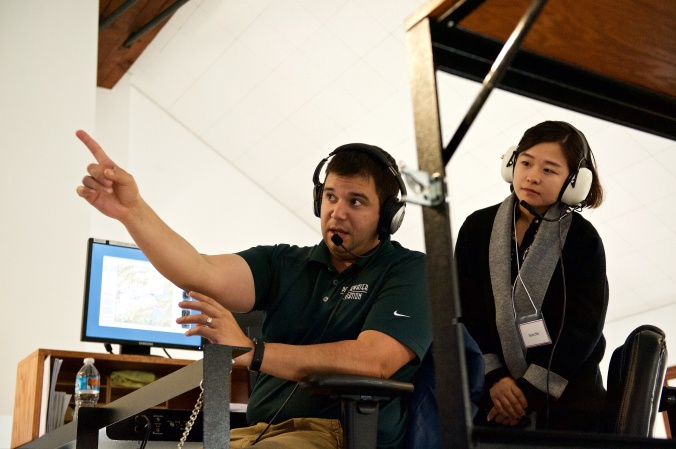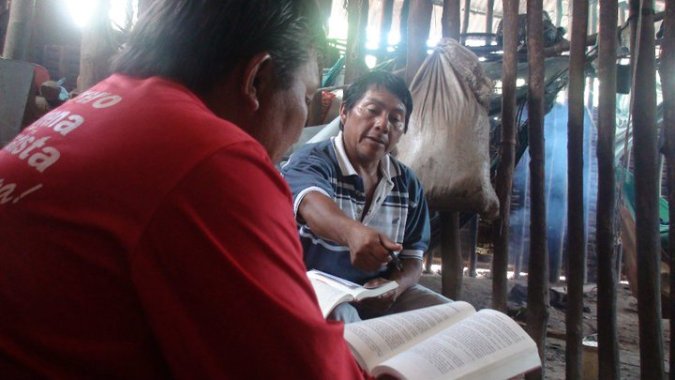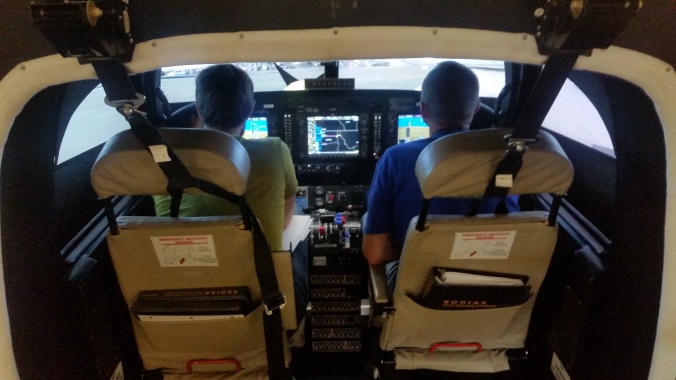By Jon Weber

As a kid, I dreamed of missionary aviation operating in distant foreign countries, from the humid jungles of South America to the arid deserts of Africa and everything in between. While we certainly work with operations in such exotic places, over the years I’ve learned that critical missionary aviation also takes place within the United States.
Samaritan’s Purse is a huge global Christian relief organization with a fleet of support aircraft. It is one of several missionary aviation organizations operating in Alaska, over terrain just as forbidding as the most remote nations overseas. Recently, Spokane Turbine Center, in partnership with our subsidiary Parkwater Aviation, provided Quest KODIAK familiarization training to Zach Riggs. Zach is an experienced Samaritan’s Purse pilot with several years of Alaskan operation under his belt.

Zach Riggs of Samaritan’s Purse in his natural Alaskan Habitat. (Photo courtesy Zach Riggs)
“Samaritan’s Purse does several things in Alaska with airplanes,” Zach explained. “On Monday’s we’re typically flying volunteers to Samaritan’s Purse work projects throughout the state. They might be building churches or seminaries, reconstructing houses destroyed during a spring flood, or whatever is needed. Most of the lumber and building supplies are brought into the villages by river barge, but other weekday flights also include specialty tools or construction items needed on site.”
There are few missionary aviation organizations with as interesting a story as Samaritan’s Purse; an older video here tells a bit of their story. I was very interested in talking to Zach about Operation Heal Our Patriots. Taking place in a remote Alaskan lodge, this seminar gives injured or wounded service members and their spouses focused time to reconnect with God, with others, and with each other. The Heal Our Patriots web page has fantastic photos and information about the program.
“Most summer weeks, I’m heavily involved with Operation Heal Our Patriots, and I’m often flying groups of veterans and their spouses to the camp. We fly them out on Sunday afternoon, and by Friday, we return for the passengers, hauling food for the next week’s camp on the way out.”
As we talked, I thought about how different Alaskan aviation is compared with flying here in the “Lower 48.” The crazy, unpredictable northern weather is a key challenge, partly because it tends to change so quickly. In-flight ice seemed normal too, even in the “warmth” of summer.
“In Alaska, you often you have to be creative and think outside the box to get to your destination safely, without breaking rules or doing something stupid. Knowing how to best use your airplane is invaluable, which is why type-specific aircraft training is critical. It becomes even more important as we begin to operate the KODIAK on very short runways.”
Samaritan’s Purse flies a variety of aircraft in Alaska, depending on what the mission requires. For heavy lifting and large passenger loads, they operate two CASA 212s, which are boxy 19 seat twin-engined turboprops. They also operate a Beech King Air 200, a Cessna Caravan, and a Quest KODIAK on wheels. A second KODIAK and a turbine DHC-3 Otter operate on amphibious floats. Zach has done type-specific training on most of these aircraft at other training providers.

Samaritan’s Purse operates the CASA 212 aircraft in Alaska. Zach has completed familiarization training similar to Spokane Turbine Center/Parkwater Aviation courses for this aircraft at other training providers. Donors help us reduce the cost of KODIAK training for missionary groups, a discount not available from other training providers. (Photo courtesy Zach Riggs)
“I was making my first flight trip on a cargo flight to Bethel immediately after completing my CASA 212 training. We were level at 10,500’, flying in good weather over the Alaska mountain range about 110 miles from home base. Suddenly, and for no apparent reason, our left engine quit. Fresh from training, I knew exactly what to do, and what checklists to perform. We elected not to attempt a restart and flew home on one engine, then landed safely. I can completely attribute the success of this incident to good training. It’s important to understand how you and your aircraft will perform in a controlled environment before an incident occurs.”
While I always imagined missionary aviation serving the needs of tribal people in remote areas, I’ve only recently learned how Spokane Turbine Center can support a much wider array of missionary aviation projects.

Samaritan’s Purse operates a beautiful Quest KODIAK on amphibious floats in Alaska. (Photo Courtesy Zach Riggs)
“I’ve done familiarization courses for other airplanes with other training providers, and Parkwater Aviation/Spokane Turbine Center training was fantastic,” Zach said. “It’s practical, the scenarios are realistic, and the instructors move beyond the canned information and figure out what I need to know for my specific operation. The knowledge I’ve picked up will have a clear impact on how I operate, and I’ve learned things that I can use in other aircraft besides the KODIAK. Here, I can draw on the experience of several great instructors.”
Thank you to our donors, who have helped us provide cost-effective training for Zach at Samaritan’s Purse and pilot/mechanics from 18 other missionary aviation organizations. Now that Zach has completed our KODIAK training, he can safely operate this aircraft type. Take a few minutes and learn about Samaritan’s Purse and Operation Heal Our Patriots.






























